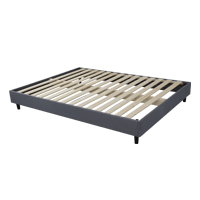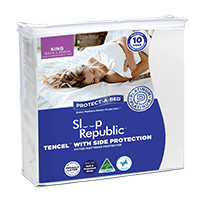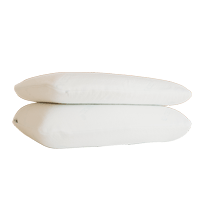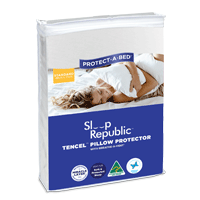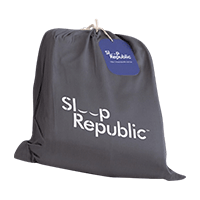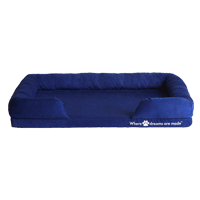Most Popular
Why Spring Wins vs. Foam: Searching for the Perfect Mattress
Foam or pocket spring? Does it really matter? Yep, it does. It matters a lot, actually. Several studies have shown that your mattress material affects the quality of your sleep, and there’s good reason why we produce spring mattresses instead of foam core mattresses.
1. Support
If there is one thing that you want (nay, need) your mattress to be, it’s supportive of your whole body and all the pressure variations that lying down exerts on your mattress of choice.
Pocket Spring Mattress
Pocket Spring mattresses are specifically designed to ease the human body to relaxation and relieve pressure points by varying the distribution of weight throughout the entire surface through differential zoning i.e. zones of different spring resistance. When you lie down on your mattress, the spring coils inside will compress and provide a comfortable level of resistance to each pressure point. The head, lower back/hips, calves/feet are supported through higher resistance springs while pressure relief is provided for the shoulders/upper back and knees/calves with lower resistance springs
Our body goes through different stages of sleep and all of our muscles relax, including the skeletal muscles that we rely on for posture and stability. The good thing about this is that it keeps us from acting out our dreams and possibly hurting ourselves. The bad thing is that it leaves our back and spinal column with no support, making them vulnerable to pain and discomfort. Even during sleep, gravity is exerting its pressure on our bodies, and we need an adequate system to ensure our joints and bones are well supported during this period of complete immobilisation. With a good pocket spring mattress, you get just this.
In addition, pocket springs, are great shock absorbers. This allows you to feel little to no movement when your partner tosses and turns in their sleep or leaves the bed.
Foam Core Mattress
Do we really need to go into detail? If you’ve ever sat on soft foam you know what can happen. You sink, the edges curl up around you and you end up completely immersed and cocooned and smothered. Foam mattresses don’t accommodate the varying degrees of pressure that a human body exerts on a mattress in the same way that pocket spring zones do.
Many users of foam mattresses also complain that the edges of a foam mattress are inadequate for sleeping or even sitting on. Without the edge support that pocket springs can offer, venturing to the edge on foam can be a hazard, and let’s face it, we use our bed for a lot more ‘activities’ than just sleeping… “Like trying to do it in quicksand”, apparently.
2. Durability
Pocket Spring Mattress
A good pocket spring mattress will last you 10 years or more. This durability is mainly because of the high-grade tempered (that means heat treated) steel coils that serve as the core support system, and since they are (hopefully) made of excellent quality steel, they will last you a long time, especially with proper care.
Foam Core Mattress
Good quality higher density foams are expensive and unless you are willing to shell out many thousands of dollars the chances are that the foam mattress you buy is a relatively thin veneer of these foams on top of a larger slab of lower quality filler foam – regardless of the fancy marketing terminology that’s used. So why do mattresses sag? The durability of this type of core is questionable and that’s where excessive body impression and sag start to appear.
Mattresses are sizeable investments, so knowing that the one you buy will stay in excellent shape for many years will give you peace of mind that you’ve invested your money well.
3. Sleeping Positions
Pocket Spring Mattress
Because pocket spring mattresses offer such great support from all angles (the more springs, the better), they are ideal for pretty much every sleeping position. Whether you sleep on your side, on your stomach, or on your back, a good spring mattress will support your whole body. The springs in the mattress distribute weight evenly throughout the surface of the bed, so you feel less pressure in certain areas. The springs also ensure that the mattress holds its shape well, even if you tend to sleep in one particular place or position more often.
Foam Core Mattress
Foam mattresses (if you can actually afford one that doesn’t just shrivel up at the very mention of ‘pressure’) vary in their ability to return to normal when a sleeper turns over or changes position. This can make for uncomfortable transitioning and restriction of natural movement. Basically with a foam mattress, you pick your position and stick to it. And we do mean ‘stick’…
4. Temperature
Temperature plays a vital role in sleep. The human body has been conditioned to recognise that a drop in temperature signals the end of the day and it’s time for bed. It’s why we all have trouble sleeping on hot and humid nights, and also why we feel so sleepy after climbing out of a hot bath and into a nice cool bedroom.
Pocket Spring
Pocket Spring mattresses offer superior ventilation as they have a more open structure than their foam counterparts. This design prevents heat retention and allows air to circulate more freely, creating a more breathable mattress core. With a pocket spring mattress, you won’t have to worry about sweating through the night or tossing and turning because of a rising body temperature. Its breathable design will help you enjoy a cooler, more comfortable, and undisturbed sleep.
Foam Core Mattress
Foam mattresses, on the other hand, do not allow for circulation of air. Thick layers of foam acts as an impenetrable barrier next your skin and cause all your heat and sweat to remain right there next to your body. Many owners of foam mattresses complain about this, and we’re not surprised. We all look for the cold side of the pillow, don’t we? Not usually a problem, we just turn the pillow. Imagine wishing there was a cold side of your foam mattress.
Consider this scenario carefully: It’s the peak of the Aussie summer… we rest our case.
5. Smell
Read the reviews and you’ll see that users of foam mattresses often complain about a chemical smell emitting from their mattress.
The one constant in all of this is that polyurethane foam is a synthetic and contains chemicals. They’re not all bad but there is a cocktail in them including things called Volatile Organic Compounds (VOCs). It’s these VOCs that are responsible for much of the ‘science lab’ smell that comes from mattresses.
High quality foams, will be made with strict controls over the chemicals that are in them. If they are CertiPUR-US certified (like Sleep Republic’s Gel Infused Memory foam) they will also be certified low in VOCs.
Now don’t get us wrong, we use some foam too but it is a fact that more foam, such as a foam core mattresses, will have more chemicals and more VOCs than a pocket spring with only a comfort layer of foam in the pillow top.
Want to minimize the science lab and VOC’s? Choose pocket springs.
The Sleep Republic Difference
We chose to produce a spring mattress over foam for very good reasons. We’ve been in the business for decades, and the decision was a very conscious one.
We don’t ask you to just take our word for how great the mattress is, we offer you a 150 Night Free Trial. If you’re not happy with it, we’ll come and pick it up, no worries. But we’re quite sure you’ll love it more than any other mattress you’ve ever owned.
Have a question about what mattress type best suits you? We’re here to help! Call us on 1800 270 871, email us on info@sleeprepublic.com.au, chat with us online or see our FAQs.


